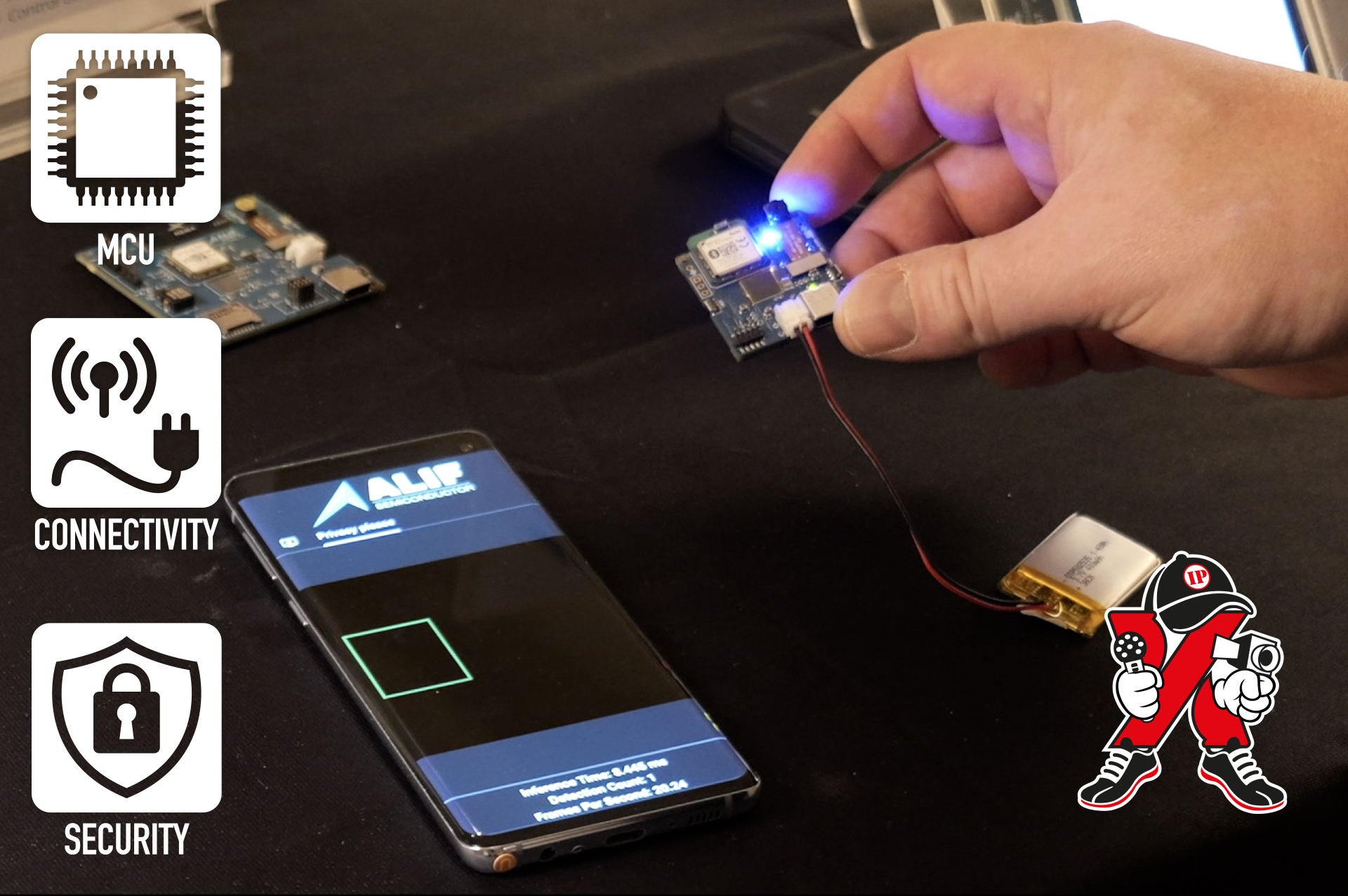In ipXchange’s final interview with Alif semiconductor at CES 2024, Henrik shows Guy another demonstration of Alif’s low-power, AI-capable microcontrollers and fusion processors, but this time there is a far more security- and privacy-conscious implementation.
In the previous demo, Alif’s AI/ML AppKit was running an object- and facial-detection AI workload, with a camera used as the image sensor.
In an adjustment of this application, Henrik shows us the new Vision AppKit that Alif has created in partnership with Telit Cinterion. This removes the screen, adds Wi-Fi and Bluetooth LE connectivity, and puts a complete artificial intelligence solution into a board the size of a postage stamp. Despite its small size, the module still retains a dual-NPU (Neural Processing Unit), dual-Cortex-M55 MCU that is easily capable of running high-level machine learning tasks on battery power.
In this case, no image data is stored or transmitted off of the device – it is only the inference that ends up on Henrik’s phone. This removes the identity of people using the end product from any transmitted data, which greatly increases data privacy and security. To put it simply, this recognition workload knows what you are doing, but it does not capture who you are, which means that external attackers won’t be able to get at that data either.
As Henrik explains, this can also be used to greatly reduce the amount of data collected by such an application, and he gives the example of a number-plate recognition system that infers only the number plate but does not capture hundreds of pictures of cars. Other key application areas include smart retail, smart buildings, and smart city.
Additionally, the compact nature of the new Vision AppKit illustrates how highly integrated Alif’s Ensemble devices truly are, and that minimal external components are required to create a fully featured AI inferencing system.
Since this board is currently in early-access mode, ipXchange can’t spill all the beans and technical details, but you can register your interest by following the link to the board page below.
Keep designing!
Comments are closed.

Comments
No comments yet